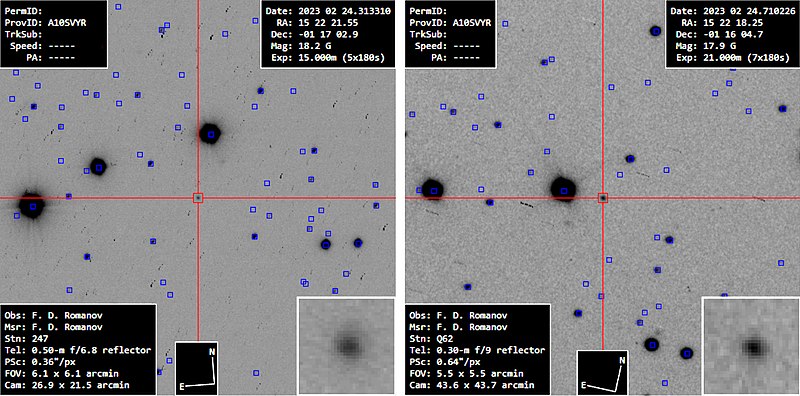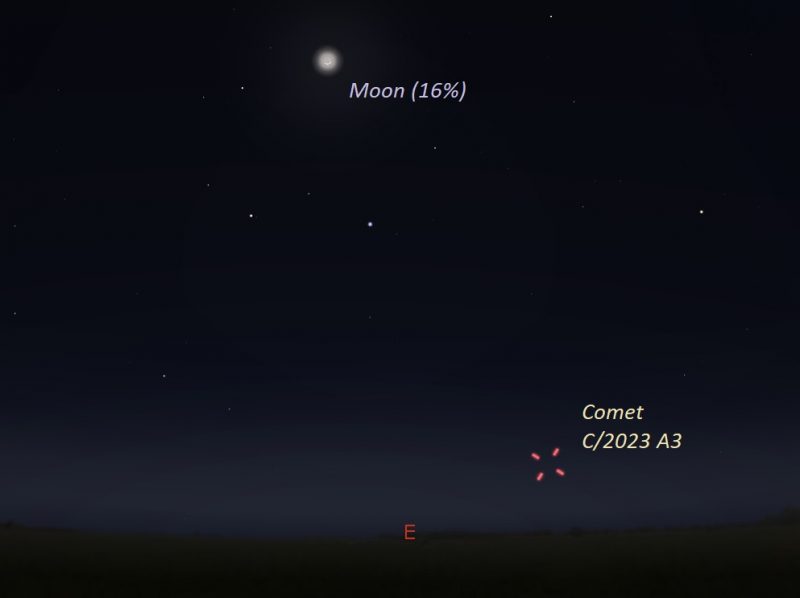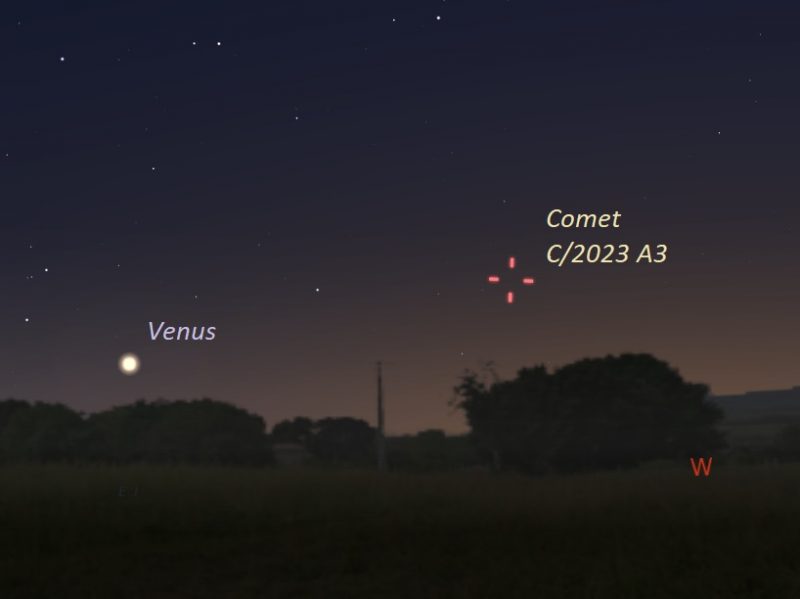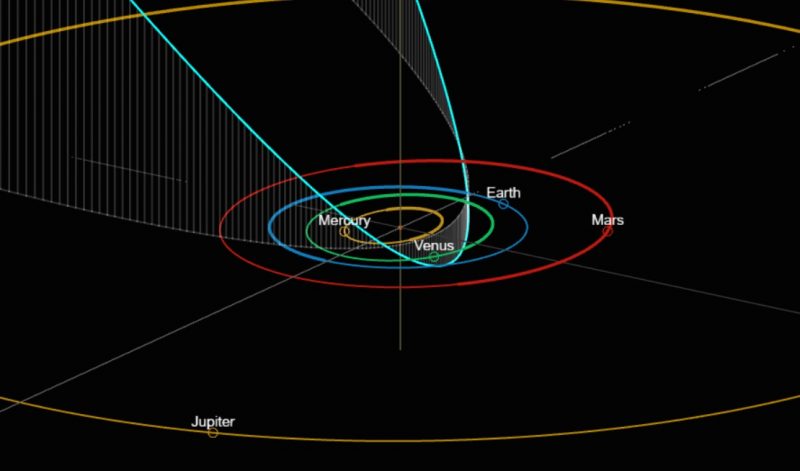Astronomers have discovered a brand new comet! They’ve labeled it C/2023 A3 (Tsuchinshan-ATLAS). And it’s one thing to sit up for, because it makes its closest strategy to the sun (its perihelion) greater than a 12 months from now. So, the unhealthy information is it’s not till 2024! However the excellent news is that early estimates of the comet’s brightness recommend it’ll be vibrant!
Perihelion for this comet will come on September 28, 2024. At that time, some estimates are suggesting it could be round magnitude 0.7. That brightness rivals a number of the brightest stars within the sky (although, for comets, the brightness is diffuse, not in a single level).
And naturally, as with all comets, remember that they’re finicky balls of ice and dust, usually not residing as much as expectations.
Last chance to get a moon phase calendar! Only a few left.
Discovery and naming
The Asteroid Terrestrial-impact Final Alert System (ATLAS) telescope in South Africa found Comet C/2023 A3 on February 22, 2023. Moreover, observers at Purple Mountain (Zijin Shin or Tsuchinshan) Observatory in China discovered the comet independently on photos from January 9, 2023. Due to this fact, the comet additionally has the nickname Tsuchinshan-ATLAS.
At discovery, the comet was nonetheless 7.3 astronomical items (AU) from the sun, and shining at a dim magnitude 18.

The place’s the comet now?
Preliminary evaluation of its trajectory suggests comet “A3” completes an orbit across the sun each 80,660 years. As of March 2023, the celestial customer is at the moment between the orbits of Saturn and Jupiter. Though some particular details and dates could be up to date, at the moment it seems that closest strategy to Earth ought to happen on October 13, 2024 at 05:38 UTC.
A tremendous element of comet “A3” is its blazing pace: 180,610 miles per hour (290,664 km/h) or 80.74 km per second, relative to Earth.
When does the enjoyable start?
Novice astrophotographers within the Northern Hemisphere might begin getting good photos of the approaching comet by early June 2024, because the customer glides by the constellation of Virgo. The comet will get misplaced within the glare of the sun by August 2024. Then it passes at perihelion – or closest to the sun – on September 28, 2024. Observers with an unobstructed view of the jap horizon may get a view of the comet throughout perihelium, particularly if the customer develops a powerful tail.
The event of a pleasant tail is a chance, as a result of the comet will probably be quite a bit nearer to the sun than the planet Venus. The truth is, it is going to be so near our star that in perihelion, comet A3 will probably be skimming the orbit of planet Mercury. Nonetheless, this closeness to our star comes with a recognized danger for comets; the opportunity of disintegration. That’s the explanation why there’s a present debate on whether or not this comet will or won’t survive its strategy to the sun.
If comet A3 survives perihelion, it’ll be too near the jap horizon throughout its closest strategy to Earth. The excellent news is that the excessive pace of the comet will get it increased within the sky throughout the next nights after passing by our planet, thus making it simpler to identify within the western sky.
Closest strategy to Earth
Its closest strategy to Earth comes on October 13, 2024. At that time, it could possibly be vibrant sufficient to achieve magnitude -0.2. Because it passes between Earth and the sun, forward scattering may make the comet seem even brighter. The reflection of daylight off the dust and ice may improve its gentle in our route, making it brighten significantly, as much as magnitude -5. That’s, if it survives.
We all know little or no in regards to the *properties* of comet C/2023 A3 (Tsuchinshan-ATLAS), so the evaluation in https://t.co/NZF4hEF5hj is vital: the “situations are extraordinarily favorable” but it surely may additionally “have a sub-kilometer nucleus that disintegrates leaving us nothing to see” …
— Daniel Fischer @cosmos4u@scicomm.xyz (@cosmos4u) March 1, 2023
The trail of Comet C/2023 A3
After the comet will get closest to the sun, it’ll swing round close to Earth. However because it does so, it passes nearly straight between Earth and the sun, making it difficult to view. In early October, the comet will probably be within the daybreak sky close to the constellations Hydra and Crater.
Then in late October, because it seems on the opposite facet of the sun, it’ll transfer into the night sky, passing by means of Serpens Caput and into Ophiuchus.
Finder charts for C/2023 A3



Backside line: A newly found comet, C/2023 A3 (Tsuchinshan-ATLAS), could possibly be fairly vibrant in October 2024.



